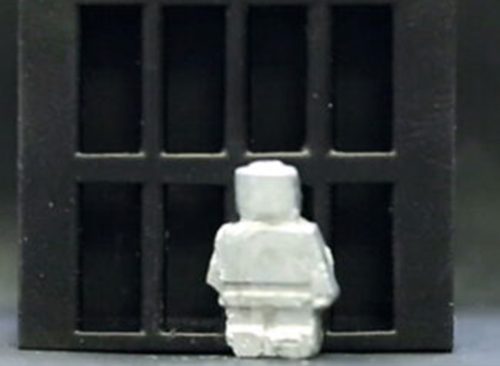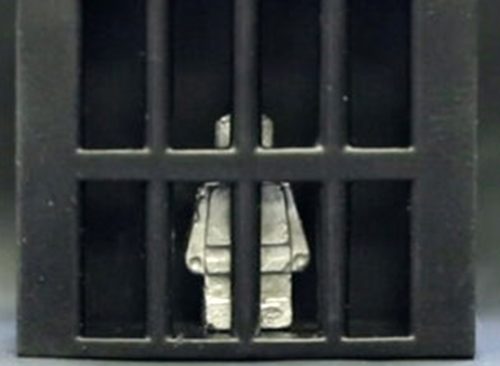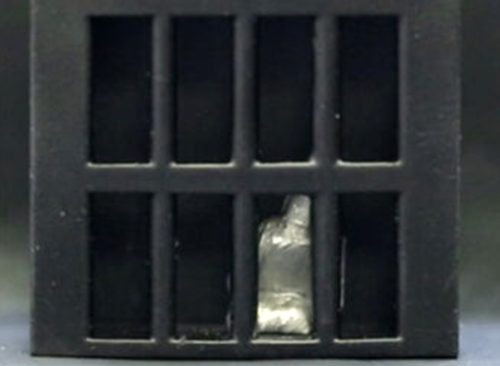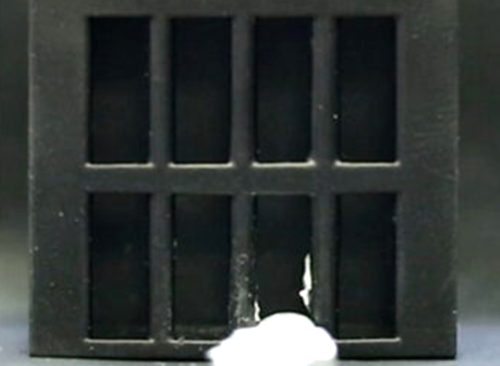Scientists Invent Shape-Shifting "Terminator" Robot to Escape Cage Through Metal Bars
It can jump, climb walls, and split in half.

The classic '90s sci-fi movie Terminator 2 depicted a shape-shifting humanoid cyborg that was capable of melting at will. Today, scientists say they've created a real-life equivalent that was able to turn itself into liquid and escape a cage by passing through metal bars. Scientists at Carnegie Mellon University made the robot, which is less than one centimeter tall, from the liquid metal gallium—a material that melts at room temperature—and microscopic pieces of a magnetic material consisting of neodymium, iron, and boron.
Read on to find out how the robot is capable of morphing, what the creators have to say about their discovery, and what the implications could be for the larger world.

The robot is shaped like a Lego figure and can jump, climb walls, and split in half so that the two pieces can work together to move objects before reassembling into one piece, the UK Times reported last week. The key: Placing it near a magnetic field.
When solid, the material comprising the robot is strong enough to support 30 times its own weight. It melts at temperatures above approximately 87 degrees Fahrenheit. To make the robot soften, stretch, or move, the researchers put it near magnets, which enabled it to "melt" and pass through a metal cage.

"The magnetic particles here have two roles," said Carmel Majidi, senior author and mechanical engineer at Carnegie Mellon University. "One is that they make the material responsive to an alternating magnetic field, so you can, through induction, heat up the material and cause the phase change."
When the temperature fell below 87 degrees, the robot regained its strength and original shape within 80 seconds of the magnetic field being turned off.

The robot is small enough to move around in a stomach, said Chengfeng Pan, an engineer at the Chinese University of Hong Kong and leader of the study. "Giving robots the ability to switch between liquid and solid states endows them with more functionality," he said.
"Now, we're pushing this material system in more practical ways to solve some very specific medical and engineering problems." "Future work should further explore how these robots could be used within a biomedical context," said Majidi.

The research team said it was inspired by the sea cucumber, which has the ability to transition between soft and rigid states to protect itself from its environment and carry heavy loads. The robot hasn't been tested in humans but has a number of potential uses—from delivering drugs to targeted areas of the body to removing foreign objects from the stomach.
"What we're showing are just one-off demonstrations, proofs of concept, but much more study will be required to delve into how this could actually be used for drug delivery or for removing foreign objects," said Majidi.

The scientists also said the robots could be used as "smart soldering machines" to create circuits and "universal screws" that could assemble parts in hard-to-reach spaces. These micro-machines "are promising for future applications in flexible electronics, healthcare, and robotics that depend on dynamic shape reconfigurability and repair," the researchers said.














